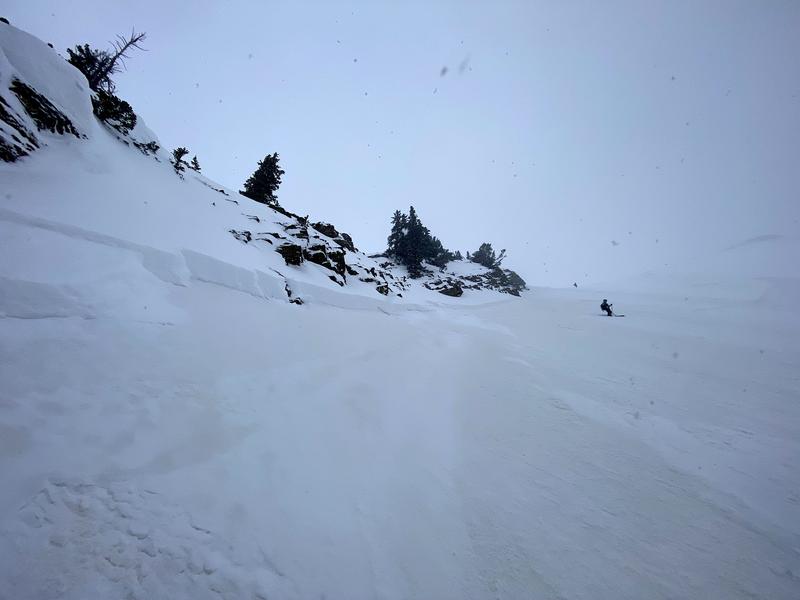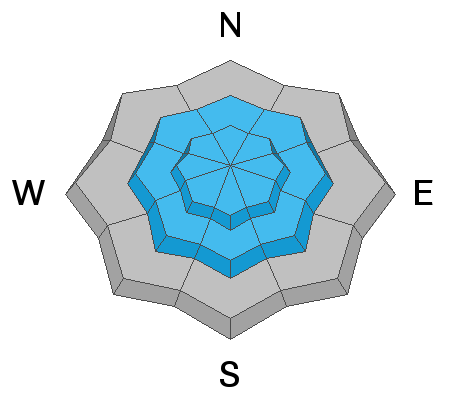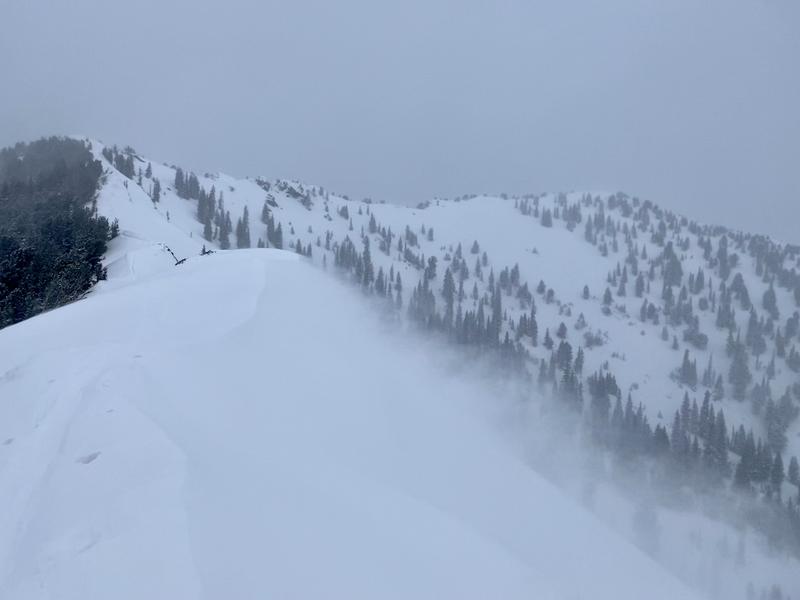Our last regular forecast is Sunday, April 17th. Intermittent forecasts will be issued through April based upon weather conditions which affect avalanche danger.
Snow: As of 5 a.m. an additional 2-6 inches of snow fell overnight and it is still coming down. Snowfall totals since Monday evening:
Little Cottonwood Canyon: 17-19.5" snow (1.36-1.43" H20)
Big Cottonwood Canyon: 12.5-17" snow (1.07-1.25 H20)
Park City Ridgeline: 11-19" snow (1.00-1.40" H20)
This morning, it is overcast with light snowfall in the mountains. Temperatures are in the single digits to mid-teens F and winds are primarily from the west-northwest and moderate. At mid-elevations winds are averaging 5-15 mph with gusts between 20-30 mph. At the upper elevations, winds are averaging in the low 30s with gusts up to 40 mph.
Today, there will be periods of occasional snowfall throughout the day, with an accumulation of up to 4" of new snow. Temperatures will be in the mid-20s F. Winds will stay elevated and west-northwesterly, gusting up to 30 mph at the mid-elevations and up to 50 mph at the upper elevations. Final storm totals could bring us close to 20-28" of snow, and up to 2.0” of water by this evening.
Later in the week, a series of weak systems will move through the area Thursday into Friday bringing additional chances of snow. Accumulation with these waves is not expected to be significant.
Yesterday, ski resorts reported widespread storm slabs sensitive to both ski cuts and explosives failing on the firm new snow/old snow interface. In the backcountry, multiple parties encountered skier-triggered avalanches within the new snow.
- Two Dogs - 10,200' - North Aspect - Soft slab failing 18" deep, 50' wide, and running 400' vertical feet. Excellent write-up talking about the margin of risk when "managing" avalanche terrain in the backcountry.
- Wolverine Bowl - 10,600' - North Aspect - Soft slab failing 9" deep, and 30' wide.
- Scotties Bowl - 9,700' - North Aspect - Soft slab failing 11" deep, and 30' wide.
- Scotties Bowl - 10,000' - North Aspect - Soft slab failing 12" deep, and 70' wide.
Photo of the crown from the Two Dogs avalanche report (B. Nalli)












